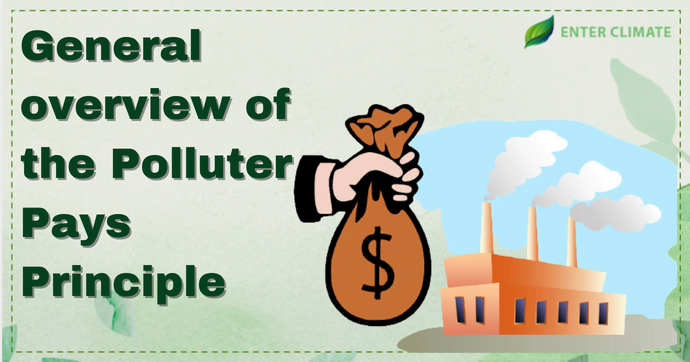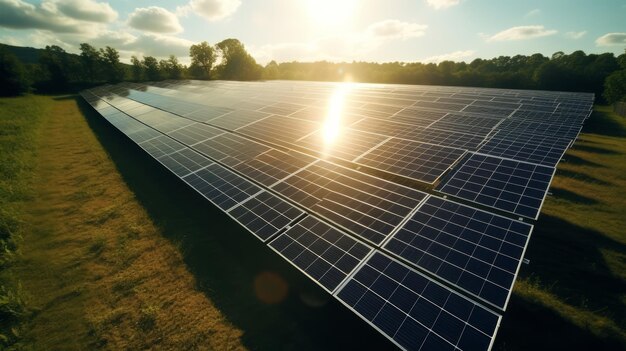
The Polluter Pays Principle Explained: Making Sense of Environmental Responsibility
In an era grappling with climate change, plastic pollution, and the depletion of natural resources, the question of who bears the cost of environmental damage becomes increasingly urgent. Is it the public, through taxes and health impacts? Or is it the entity directly responsible for the pollution?
Enter the Polluter Pays Principle (PPP), a fundamental concept in environmental law and policy that seeks to answer this very question. Far from being a niche legal term, PPP is a cornerstone of sustainable development, aiming to ensure that the burden of pollution falls where it justly belongs.
This long-form guide will demystify the Polluter Pays Principle, explaining its origins, how it works, its benefits, and the challenges it faces in a complex world.
What Exactly is the Polluter Pays Principle?
At its core, the Polluter Pays Principle (PPP) is a simple yet powerful idea: those who cause pollution should bear the costs of managing it to prevent damage to human health or the environment.
Imagine spilling a drink on a friend’s new carpet. Who should pay for the cleaning? You, the one who spilled it, right? The Polluter Pays Principle applies this same common-sense logic to environmental damage, but on a much larger, more complex scale.
Instead of society (through taxes, public health services, or environmental degradation) subsidizing polluting activities, the PPP ensures that the costs are "internalized" by the polluter. This means the polluter includes these environmental costs in their business operations, product prices, or overall financial planning.
Key takeaways about its definition:
- Cost Internalization: It’s about shifting the cost of pollution from the general public or the environment to the polluter.
- Preventative & Remedial: It covers not just cleaning up existing pollution, but also preventing future pollution and compensating for environmental damage.
- Economic Instrument: It’s often implemented through economic tools like taxes, fees, and liability schemes, rather than just direct orders.
Origins of the Principle
While the idea has roots in ancient common law concepts of liability, the Polluter Pays Principle gained international prominence in 1972 when it was adopted by the Organisation for Economic Co-operation and Development (OECD).
The OECD, a group of developed countries, introduced PPP primarily as an economic principle to avoid distortions in international trade and investment. If one country allowed its industries to pollute freely (and thus avoid pollution control costs), while another imposed strict controls, the former would have an unfair competitive advantage. PPP aimed to level the playing field by ensuring that environmental costs were reflected in the prices of goods and services across different countries.
Since then, it has been widely adopted by international organizations, national governments, and regional blocs like the European Union, becoming a guiding principle in environmental law globally.
Why Do We Need the Polluter Pays Principle?
The Polluter Pays Principle isn’t just about fairness; it’s a strategic tool for environmental protection and sustainable development. Here’s why it’s so vital:
-
Deterrence and Prevention:
- By making polluters financially responsible, the PPP creates a strong incentive for them to reduce pollution in the first place. If polluting is expensive, companies will invest in cleaner technologies, better waste management, and more sustainable practices.
- It shifts the focus from "clean-up after the fact" to "prevent pollution from happening."
-
Fairness and Environmental Justice:
- It’s simply not fair for innocent parties (like local communities, future generations, or the environment itself) to bear the burden of someone else’s polluting activities.
- PPP promotes environmental justice by ensuring that those who benefit economically from potentially polluting activities also bear the costs of managing their impact.
-
Economic Efficiency:
- When environmental costs are "externalized" (borne by society), the market doesn’t accurately reflect the true cost of goods and services. Products made through highly polluting processes might appear cheaper than they truly are.
- PPP helps internalize these costs, leading to more accurate pricing and encouraging consumers and businesses to choose more environmentally friendly options.
-
Innovation and Green Technology:
- Facing the financial implications of pollution, businesses are spurred to innovate. They invest in research and development to find more efficient, less polluting production methods, materials, and energy sources.
- This drives the development of green technologies and industries, fostering a more sustainable economy.
-
Accountability:
- It holds polluters accountable for their actions, fostering a sense of responsibility and encouraging better corporate environmental governance.
- It sends a clear message: environmental damage has consequences.
How Does the Polluter Pays Principle Work in Practice? (Mechanisms)
The PPP is a principle, not a single law. Its implementation varies greatly across countries and contexts, using a range of policy instruments. Here are some common ways it’s put into practice:
-
Pollution Taxes and Charges:
- Mechanism: Governments levy taxes or fees on specific pollutants (e.g., carbon tax, wastewater discharge fees, landfill taxes). The more a company pollutes, the more it pays.
- Example: A carbon tax makes emitting carbon dioxide more expensive, incentivizing industries to reduce their carbon footprint. Many European countries have taxes on waste going to landfills.
-
Environmental Permits and Licenses with Fees:
- Mechanism: Companies need permits to operate, and these permits often come with fees that reflect the potential environmental impact. They may also include limits on emissions, with fines for exceeding them.
- Example: An industrial facility might pay an annual fee for a permit to discharge treated wastewater into a river, with the fee size depending on the volume and toxicity of the discharge.
-
Liability and Compensation Schemes:
- Mechanism: Legal frameworks establish that polluters are liable for the damage they cause and must compensate victims or fund clean-up operations. This can include civil lawsuits or specific environmental liability laws.
- Example: If an oil spill devastates a coastline, the responsible company is legally obligated to fund the clean-up and compensate affected industries (like fishing or tourism). The U.S. Superfund law (CERCLA) makes polluters liable for cleaning up hazardous waste sites.
-
Extended Producer Responsibility (EPR):
- Mechanism: This principle extends a producer’s responsibility for a product to the post-consumer stage of its life cycle. It means manufacturers are responsible for the collection, recycling, and disposal of their products once consumers are done with them.
- Example: Companies that produce electronics (like TVs or phones) might be required to fund or operate collection and recycling schemes for old electronics, rather than leaving the burden to municipalities or consumers. Packaging waste schemes are another common EPR example.
-
Deposit-Refund Systems:
- Mechanism: Consumers pay a small deposit when buying a product (like a bottle or can), which is refunded when they return the empty container for recycling. This incentivizes proper disposal and recycling.
- Example: Beverage container deposit schemes are widespread, encouraging consumers to return bottles and cans instead of littering them.
-
Tradable Pollution Permits (Cap-and-Trade):
- Mechanism: A total cap is set on the amount of a certain pollutant that can be emitted. Companies are then issued or can buy "permits" to emit a certain amount. Companies that reduce their emissions below their allowance can sell their surplus permits to companies that need more.
- Example: The European Union Emissions Trading System (EU ETS) sets a cap on greenhouse gas emissions for certain industries. Companies buy and sell allowances to emit, creating a market price for carbon.
Benefits of the Polluter Pays Principle
When effectively implemented, PPP brings a host of advantages:
- Cleaner Environment: Direct reduction in pollution levels as companies find it more economical to prevent than to pay.
- Fairer Distribution of Costs: Ensures those who benefit from polluting activities bear the associated environmental costs.
- Economic Incentives for Green Practices: Drives innovation in clean technologies and processes.
- Increased Accountability: Holds industries and businesses responsible for their environmental footprint.
- Reduced Public Burden: Less reliance on taxpayer money for environmental clean-ups and public health issues caused by pollution.
- Sustainable Resource Management: Encourages more efficient use of resources and reduction of waste.
Challenges and Criticisms of the Polluter Pays Principle
While widely accepted, the Polluter Pays Principle is not without its difficulties and critiques:
-
Defining "The Polluter":
- In complex supply chains or with historical pollution, it can be incredibly difficult to identify the sole or primary polluter. Was it the raw material supplier, the manufacturer, the distributor, or the consumer?
- For diffuse pollution (like agricultural runoff), pinpointing responsibility is even harder.
-
Measuring Damage and Cost:
- How do you quantify the exact cost of environmental damage? The value of a lost species, a degraded ecosystem, or long-term health impacts is hard to put a price on.
- This makes it challenging to set appropriate fines, taxes, or compensation levels.
-
Passing Costs to Consumers:
- While the principle aims to internalize costs for the polluter, companies often pass these increased costs onto consumers through higher prices for goods and services. This can disproportionately affect lower-income households.
- This raises questions about who ultimately pays and whether the principle achieves its intended economic fairness.
-
Competitiveness Concerns:
- Industries in countries with strict PPP enforcement might argue they face a competitive disadvantage against those in countries with weaker environmental regulations, potentially leading to "pollution havens" where companies relocate to avoid costs.
-
Retroactive Application:
- It’s challenging to apply the principle to historical pollution where the original polluters no longer exist, or where the damage wasn’t understood at the time of the activity. Laws like Superfund try to address this but face significant legal battles.
-
Enforcement and Monitoring:
- Effective implementation requires robust legal frameworks, strong regulatory bodies, and consistent monitoring, which can be expensive and resource-intensive, especially in developing countries.
- Corruption and lack of political will can also undermine its effectiveness.
-
Small vs. Large Polluters:
- The principle can be more easily applied to large industrial point sources of pollution. It’s much harder to manage and charge diffuse, small-scale, or household-level pollution.
Real-World Examples of the Polluter Pays Principle in Action
- The U.S. Superfund Law (CERCLA): Formally known as the Comprehensive Environmental Response, Compensation, and Liability Act of 1980, this law allows the U.S. Environmental Protection Agency (EPA) to clean up hazardous waste sites and then compel the responsible parties (polluters) to pay for the clean-up costs. If polluters can’t be identified or are bankrupt, the fund (originally from a tax on chemical and petroleum industries) covers the costs.
- European Union Environmental Liability Directive (ELD): Adopted in 2004, the ELD establishes a framework based on the PPP, making operators of certain activities (e.g., energy industries, chemical production) liable for environmental damage (to protected species and natural habitats, water, or land) and obliging them to undertake or finance remedial measures.
- Carbon Pricing (Taxes & Trading Schemes): Countries around the world are implementing carbon taxes or cap-and-trade systems (like the EU ETS) where companies pay for each tonne of carbon dioxide they emit. This directly applies the PPP to climate change pollution.
- Plastic Bag Levies: Many countries and cities have introduced small charges for plastic bags at supermarkets. While seemingly minor, this directly applies the PPP to the consumer as the "polluter" (of litter) to discourage single-use plastic.
- Waste Management Fees: Many municipalities charge households and businesses for waste collection and disposal based on the volume or weight of waste produced, directly implementing PPP at a local level.
Is the Polluter Pays Principle Enough?
While the Polluter Pays Principle is a powerful and essential tool for environmental governance, it’s rarely sufficient on its own to solve all environmental problems. It needs to be part of a broader, integrated strategy that includes:
- Strong Regulations and Standards: Clear limits on pollution and mandates for best available technologies.
- Public Awareness and Education: Informing citizens about environmental impacts and sustainable choices.
- Government Investment: Funding for environmental research, infrastructure, and conservation efforts.
- International Cooperation: Addressing transboundary pollution and global issues like climate change.
- Consumer Responsibility: Encouraging conscious consumption and ethical purchasing decisions.
- Precautionary Principle: Taking preventative action even when scientific certainty about harm is not fully established.
PPP works best when it acts as an economic incentive within a robust regulatory framework, ensuring that the burden of environmental costs is appropriately distributed and that sustainable practices become the norm, not the exception.
Conclusion: A Principle for a Sustainable Future
The Polluter Pays Principle is more than just an environmental concept; it’s a fundamental tenet of fairness and economic rationality in our relationship with the planet. By placing the financial burden of pollution on those who create it, PPP incentivizes cleaner production, fosters innovation, and promotes a more just and sustainable society.
While challenges remain in its implementation – from defining responsibility to measuring damage – its underlying logic remains indispensable. As we navigate increasingly complex environmental crises, the Polluter Pays Principle will continue to be a vital guide, reminding us that environmental responsibility is not a shared burden to be diffused, but a direct consequence to be borne by those who impact our shared natural world. Understanding and advocating for its effective application is crucial for building a greener, more accountable future for all.
![]()


Post Comment